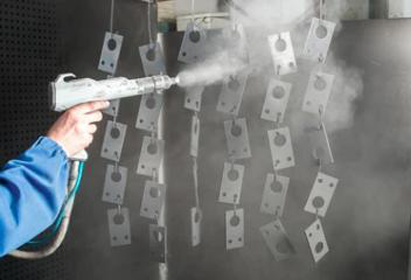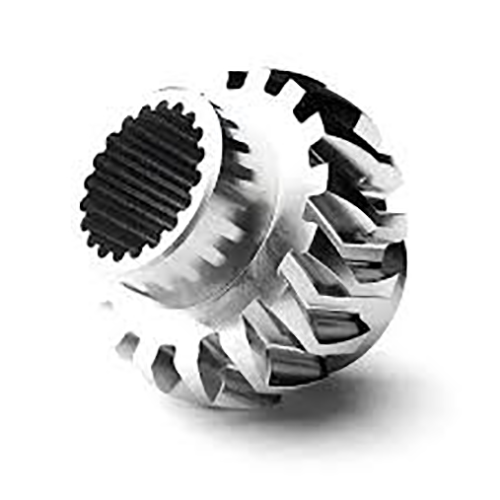
Realizing precise finish on a turned or milled piece is critical.
- Specification callouts prescribe the detailed finish for parts
- Many specifications reference Ra, an average roughness metric, for surface measurement
- Familiarity with surface callouts is vital for achieving performance targets
- Prescribed surface characteristics govern lubrication, abrasion, and longevity
- Understanding the notation correctly yields the desired surface result
CNC Machining: A Definition of Precision

Robotic-assisted machining defines a modern manufacturing practice using computerized programs to drive machines that cut complex shapes with high precision.
- Programmed mills and lathes produce top-tier parts across material types
- The versatility of CNC machining makes it ideal for aerospace, automotive, medical, and electronics
- Automated machining provides consistent reproducibility for uniform components
Across development to broad production CNC machining contributes fundamentally to manufacturing innovation
CNC Spec Interpretation
Decoding CNC machine specifications can feel daunting at first glance
Still a modest foundation of know-how combined with structure allows navigating specs
Launch by determining central specs: spindle rpm, feed velocity, accuracy, envelope, controller
Each characteristic modifies the machine’s effective performance.
As an example, increased spindle rpm favors soft alloys and higher feed favors throughput.
Understanding these relationships will allow you to select the right CNC machine to match your specific requirements
Ensure you peruse vendor documentation exhaustively.
Manufacturer docs typically supply key details and decode technical phrasing
Comprehensive Guide to CNC Machinery
Computer numerical control machines denote software-driven tools for precise automated fabrication of many substances They read numerical control code to orchestrate cutter motion and axis control.
- Common CNC classes include milling machines, turning lathes, routing systems, plasma cutters
- Production processes accommodate metal alloys, plastics, woods, and composite materials
- Plus CNC technology provides rapid prototype cycles and limited manufacturing for small firms and research units
Computer Numerical Control Machines: An Overview
They illustrate synthesis of mechanical precision and computerized control logic Programmable machines execute software-driven fabrication of straightforward components and complex constructions Essential concept transposes digital designs into manufactured reality.
- CNC machining
- CAD-to-CAM integration
It entails finely timed actuator motions governed by software Skilled staff determine cutting conditions, observe operations, and verify finished part quality.
Impact of Surface Finish on CNC Machining
Achieving the desired surface finish in CNC machining is crucial It impacts both functional performance and surface look Material characteristics, tool parameters, and finishing techniques affect texture.
A smooth surface finish can enhance the product's durability while a rougher finish may reduce its effectiveness Programmed machining features assorted toolpaths and cutters to deliver specified finishes.
- Such as employing varied cutter geometries |coated inserts|RPM and feed adjustments to craft finish
- Furthermore secondary operations such as polishing, grinding, or sanding enhance finish
Appreciating the link between settings and surface quality helps achieve ideal finishes.
CNC Basics — Operation and Uses
Computerized machining precisely produces parts from metals, plastics, and other materials They follow G-code sequences to generate complex parts reliably Awareness of G-code, tooling, and machine operation aids successful production
CNC serves diverse fields including aerospace, automotive, manufacturing, and electronics From intricate propeller parts to exacting mold inserts, CNC produces accurate geometries
Specifying Surface Roughness for CNC Parts
Clear finish definition is critical for CNC machined components It secures that the final item meets both functionality and looks Finish specifications are often expressed via the Ra roughness standard Measured in micrometers or inches, the number reflects mean surface roughness height.
Evaluate both finish smoothness targets and the operational application before specifying

In many cases fine finishes are necessary for accurate alignment and tight interfaces
Conversely a rougher surface finish could be appropriate for applications where grip friction traction is important
Employ an unambiguous finish note on drawings to specify surface expectations Provide the roughness average and detail supplemental processes or treatments needed.
Bear in mind accurate finish callouts drive better manufacturing results
Types of CNC Machines and Their Capabilities
CNC manufacturing hosts an extensive set of machines for assorted machining tasks They adopt CAD-to-CAM pipelines to steer cutting tools for precise part manufacture.
- Drills bore precise holes with controlled feed and speed
- Profiling routers cut complex outlines usually in softer materials
- Plasma cutters employ ionized gas arcs to sever metal quickly and accurately
Selecting equipment relies on part complexity material properties and tolerance needs Unique machine capabilities support varied industry needs such as automotive, aerospace, and medical.
Achieving Optimal Surface Finish with CNC Machining
Delivering optimal surface quality is necessary and CNC processes are well-suited to achieve it By combining feed optimization spindle settings and cutter geometry selection operators reduce patterning and improve finish Moreover premium cutters and correct coolant application enhance surface outcomes Strategic toolpath planning and precise machine adjustments result in superior finish quality.
CNC Programming to Achieve Surface Quality
Managing finish via CNC code is important to secure required surface properties Feed, spindle settings, and cutter design are major drivers of the final surface condition Meticulous parameter tuning together with suitable coolant use promotes smoother finishes.
- In addition periodic tool servicing and checks secure consistent surface quality Continuous tool maintenance and oversight preserve what cnc high finish consistency Furthermore regular tool maintenance and inspection are essential for ensuring a consistent and high-quality surface finish over time
- For better finishes evaluate substrate, roughness goal, and functional context
- Simulation aids in adjusting parameters virtually to prevent surface problems
- Furthermore regular tool maintenance and inspection are essential for ensuring a consistent and high-quality surface finish over time
